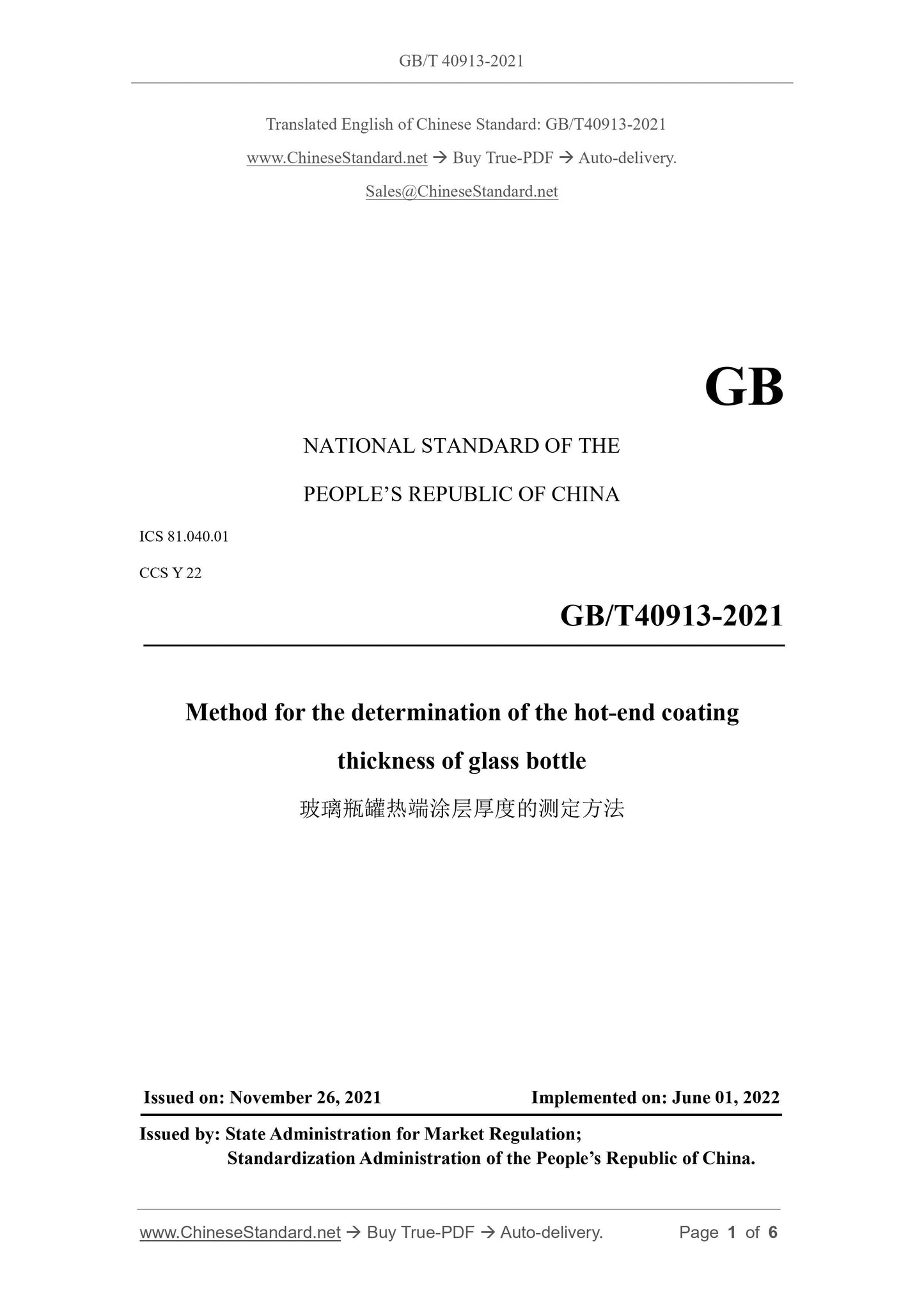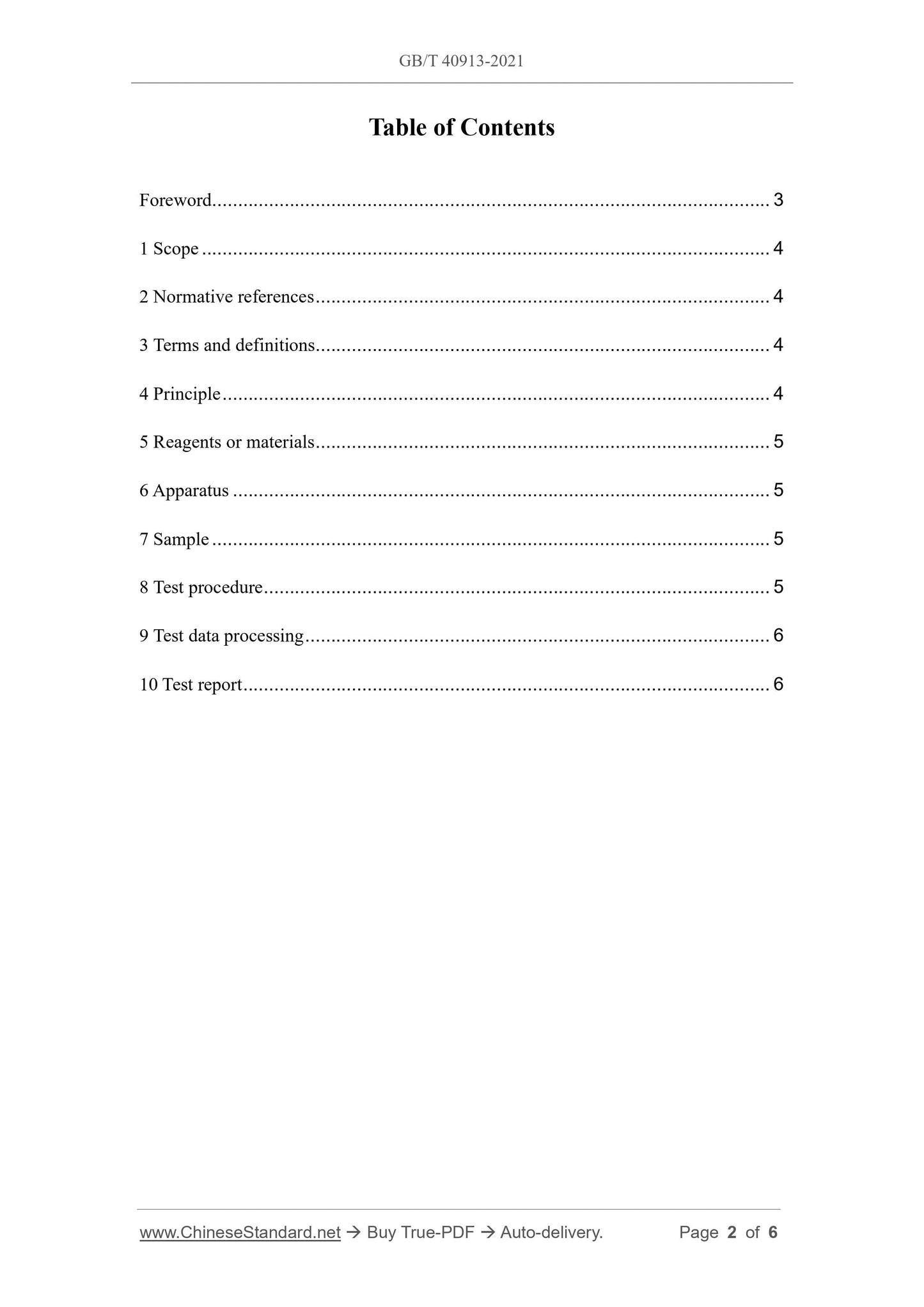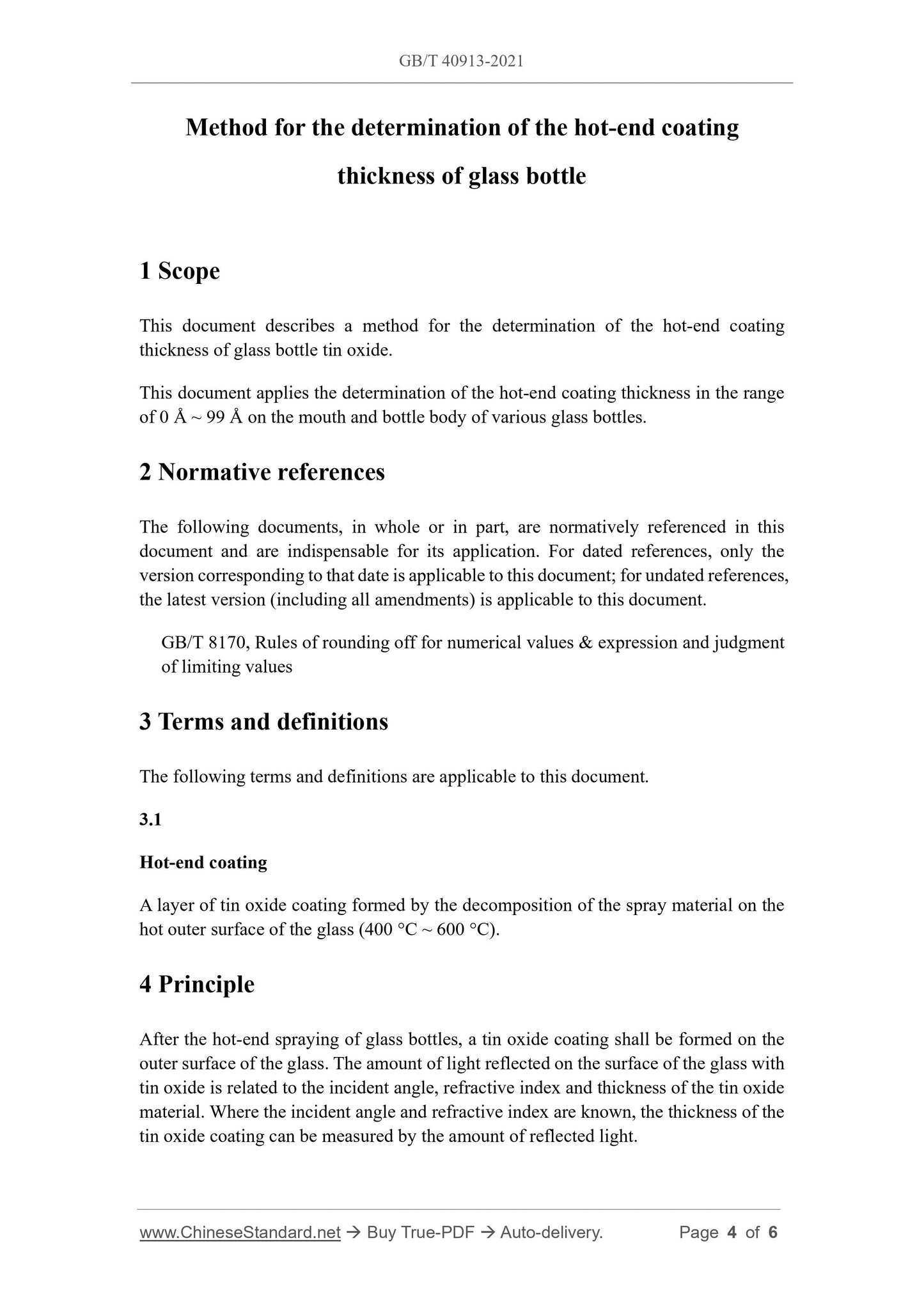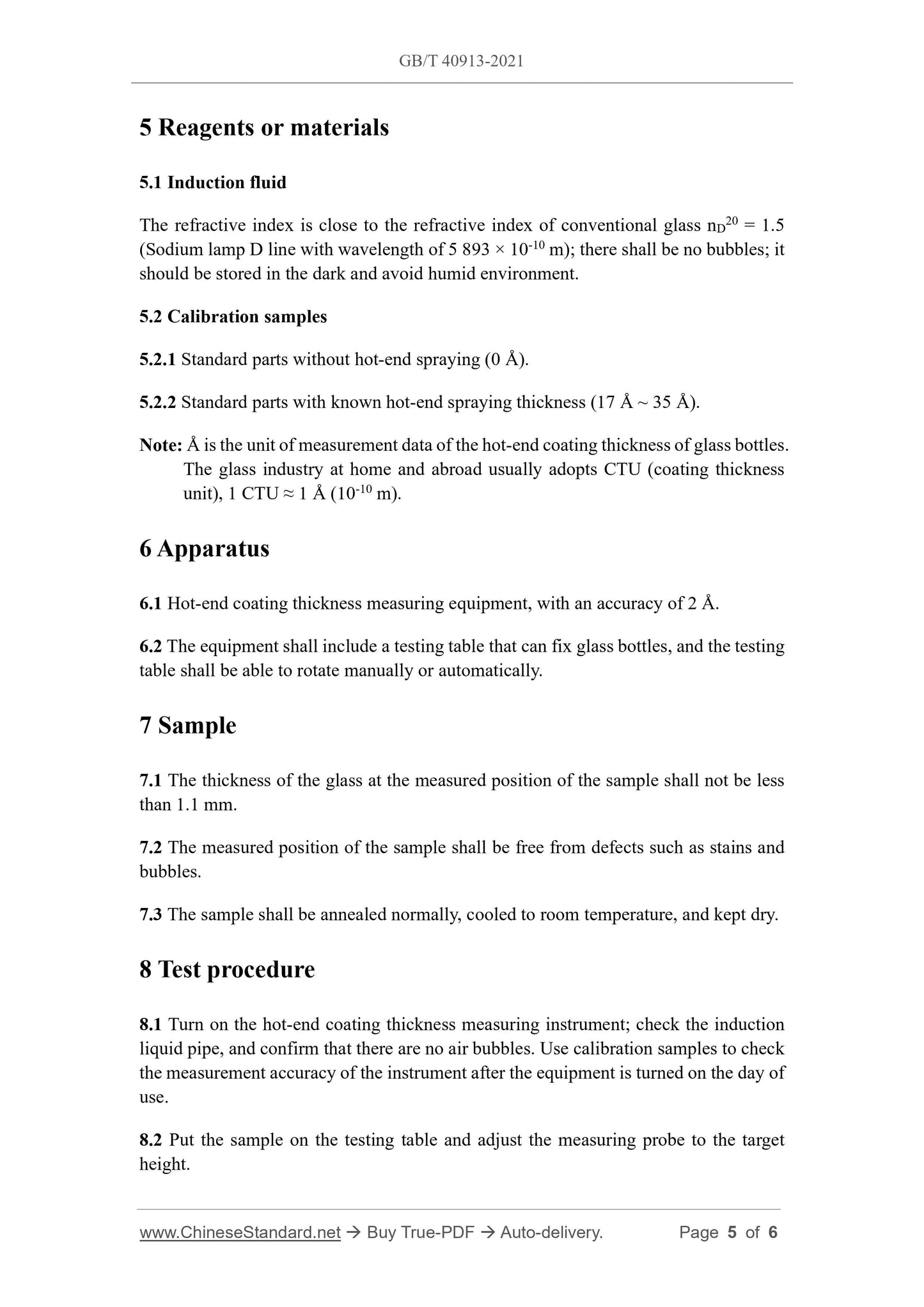1
/
of
4
www.ChineseStandard.us -- Field Test Asia Pte. Ltd.
GB/T 40913-2021 English PDF (GB/T40913-2021)
GB/T 40913-2021 English PDF (GB/T40913-2021)
Regular price
$95.00
Regular price
Sale price
$95.00
Unit price
/
per
Shipping calculated at checkout.
Couldn't load pickup availability
GB/T 40913-2021: Method for the determination of the hot-end coating thickness of glass bottle
Delivery: 9 seconds. Download (and Email) true-PDF + Invoice.Get Quotation: Click GB/T 40913-2021 (Self-service in 1-minute)
Newer / historical versions: GB/T 40913-2021
Preview True-PDF
Scope
This document describes a method for the determination of the hot-end coatingthickness of glass bottle tin oxide.
This document applies the determination of the hot-end coating thickness in the range
of 0 Å ~ 99 Å on the mouth and bottle body of various glass bottles.
Basic Data
| Standard ID | GB/T 40913-2021 (GB/T40913-2021) |
| Description (Translated English) | Method for the determination of the hot-end coating thickness of glass bottle |
| Sector / Industry | National Standard (Recommended) |
| Classification of Chinese Standard | Y22 |
| Word Count Estimation | 5,584 |
| Issuing agency(ies) | State Administration for Market Regulation, China National Standardization Administration |
Share







